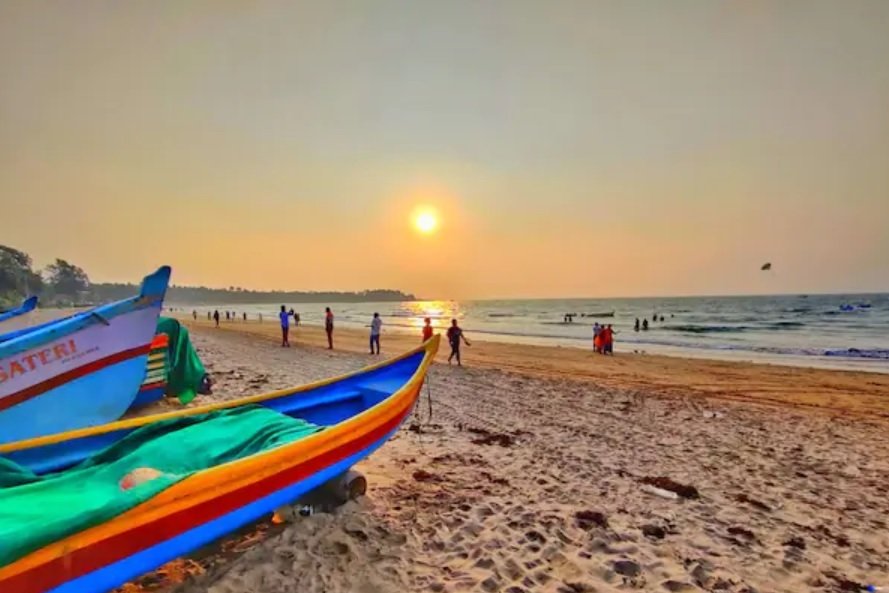India is known for its diverse landscapes, cultural richness, and many historical landmarks. It attracts millions of tourists from across the globe every year, who flock to the snow-capped peaks of the Himalayas, the sunlit beaches of Goa, the lush backwaters of Kerala, and the deserts of Rajasthan. Tourism, obviously, plays an important role in India’s economyand supports millions of livelihoods. According to Statista, travel and tourism contributed around 9.1% to the country’s GDP in 2024. However, this crucial sector is increasingly vulnerable as the effects of climate change become more apparent.
Effects of Climate Change on Tourism Destinations
Climate change was once considered a distant challenge. But, it is now an immediate and visible concern. Rising temperatures, unpredictable monsoons, frequent extreme weather events, and environmental degradation are significantly altering the tourism landscape. In India, these changes are particularly evident. In fact, many iconic destinations in India are grappling with challenges such as diminishing snowfalland biodiversity loss. Let’s take a look at some of the most affected travel regions:
The Himalayan region, which is known for its snow-covered landscapes, is witnessing a decline in snowfall due to rising temperatures. This affects activities like skiing and trekking, which are key attractions for tourists. Additionally, the melting of glaciers and increased risk of landslides threaten the safety and accessibility of these areas.
Coastal destinations such as Goa, Kerala, and the Andaman Islands face the dual threats of rising sea levels and more frequent cyclones. These changes are eroding beaches, damaging coral reefs, and putting tourism infrastructure at risk. For instance, Cyclone Fani in 2019 caused extensive damage to Odisha’s coastline, resulting in billions of dollars in losses.
Major cities like Delhi and Mumbai, which attract millions of visitors annually, are increasingly becoming uncomfortably hot due to prolonged heatwaves. In 2023, India experienced its second warmest year on record, deterring tourists during traditionally busy seasons.
What is happening in Sustainable Tourism?
Despite these challenges, sustainable tourism practices in India are gaining momentum. Many stakeholders are recognising the need to adapt to a changing climate and are embracing sustainable tourism practices. Goa, with the introduction of green certifications for hotels and restaurants that adhere to eco-friendly standards, is a leading example of this. In 2022, the Goa government launched initiatives to promote solar energy use in the hospitality sector, reducing carbon footprints. Similarly, Kerala has implemented "Responsible Tourism" programs that integrate local communities into tourism activities, ensuring that benefits reach grassroots levels.
- Promotion of Offbeat and Low-Impact Tourism: The Ministry of Tourism has been encouraging the exploration of lesser-known destinations. For example, in Madhya Pradesh, heritage homestays are being promoted as an alternative to conventional hotels. This not only diversifies tourist traffic but also reduces the strain on overexploited areas such as Rajasthan’s Jaipur or Himachal Pradesh’s Manali.
- Renewable Energy Adoption: Renewable energy is being increasingly used in tourism infrastructure. Rajasthan’s luxury desert camps, for example, are integrating solar-powered facilities to provide electricity and hot water. In Ladakh, sustainable energy initiatives have transformed homestays and small hotels into energy-efficient establishments, reducing dependency on diesel generators.
- Community-Centric Ecotourism Projects: In the Nilgiris, community-led initiatives have focused on restoring native forests and promoting sustainable agricultural practices. The Kaziranga National Park in Assam has similarly introduced programs where visitors can learn about anti-poaching measures and the importance of conservation.
- Plastic-Free Tourism Campaigns: Several Indian states, including Himachal Pradesh and Sikkim, have imposed bans on single-use plastics in tourist areas. These measures are complemented by public awareness drives and the establishment of water refill stations to reduce reliance on bottled water.
The future of sustainable tourism in India hinges on adopting innovative strategies that balance environmental preservation and economic growth. Policymakers can draw inspiration from global examples like Bhutan’s “high-value, low-impact” tourism model to regulate visitor numbers and fund conservation efforts. Technology integration, such as weather prediction tools and resource management apps, can enhance climate resilience. Promoting offbeat destinations and off-season travel can reduce pressure on overcrowded hotspots, while campaigns encouraging responsible tourism behaviour will ensure travellers contribute positively to local communities and ecosystems.
Climate change is undoubtedly reshaping the future of tourism in India. While the challenges are significant, they also present an opportunity to reimagine the sector in a more sustainable and resilient way.















.jpg)




